Production Designer K.K. Barrett on Creating Her’s Beautiful Future
One walks out of the theater after seeing writer/director Spike Jonze’s Her with lots of different feelings. First, and perhaps foremost, is a kind of bittersweet hope—similar to the way Michel Gondry and Charlie Kaufman’s film Eternal Sunshine of the Spotless Mind makes you feel when it ends. These are films about love, warts and all, and what we’ll put ourselves through in pursuit of it.
In Sunshine, Jim Carey’s Joel is utilizing the Lacuna Agency to wipe his mind of memories of his lost love, Clementine (Kate Winslet). In Her, Theodore (Joaquin Phoenix) finds himself falling in love with his new operating system, Samantha (voiced by Scarlett Johansson). Both of these films take these somewhat wild premises and ground them in very real, very human emotions—without mocking or abusing their protagonists—and you can’t help but leave the theater marveling that what superficially sounded like a Sci-Fi movie going in turned out to be a very human love story.
Another feeling one has when leaving Her is one of wonder at just how beautiful the film is. Set in a near-future Los Angeles, Her looks brilliantly new, utterly realistic, and somehow slightly retro. It will give you both apartment envy (Theodore’s place includes huge windows and a clean, open design) and a measure of hope that this is how the future might look. Her’s future Los Angeles would be a fantastic place to live.
We reached out to award winning K.K. Barrett, Spike Jonze’s long-time production designer, to find out just how he helped create Her's believable, beautiful future world. Barrett recently recently won the Los Angeles Film Critics Association's Best Production Design Award for his work on the film.
Her has the most seamless futuristic design I’ve ever seen—at no point do you find yourself getting lost in some busy background, which seems to happen a lot with films set in the future, yet you still marvel at how realistically different it feels from our world now. How’d you pull that off?
I think sometimes when people think about the future they get hung up on the things that will change rather than the things that will stay the same. We get this wish like, ‘Oh, we’re all going to have flying cars and we’re going to have wrist watches that talk to us,’ which we actually already have [Laughs]. When thinking about the future, people always think about technology and about what technology is rather than what the human experience with technology is.
Theodore’s experience of falling in love with his operating system Samantha feels, and looks, surprisingly natural.
This movie is really all about the human experience, it’s all about someone falling in love through a window of technology, but the technology does not stand in the way. The technology is an enabler, or a comfort. So when we began thinking about the world of this film, it was about creating a comfortable surrounding. This was Spike’s mandate; this was not a dystopian future. This wasn’t necessarily a utopian future, but it was a world where everything you wanted was there for you, except for the solutions to the human dilemma of ‘how do we get close to each other, how do we stay close to each other, how do we trust each other?’ All of those things are constants, and technology will never save us from those problems.
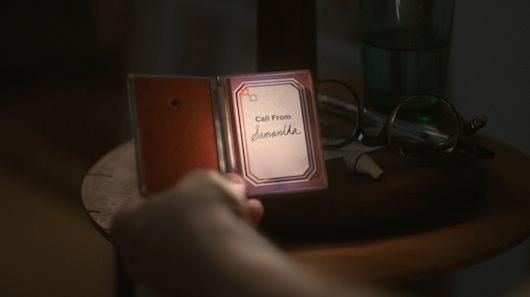
What were some concrete decisions you made to try and create a future that felt real but new?
We took things away that were distracting. We took away noisy signage, traffic, the things that surround us in our current world, and by taking those things away we said, ‘Oh, now we’re beginning to be in the future.’ We didn’t really include a lot of innovation, we just cleaned up the present, left it littered with the best of what we know now, and then brought this sexy voice over the computer.
Where did you draw inspiration from for the film’s uncluttered, clean look?
I didn’t do research into other people’s futures, I mainly worked off the script and off of emotional things we found that we tried to incorporate into our visual world. We’d find photographs from different photographers and say, ‘this is beautiful, this is clean, how do we make a world like that? Rather than thinking of architecture first, how do we create this soft bubble?’
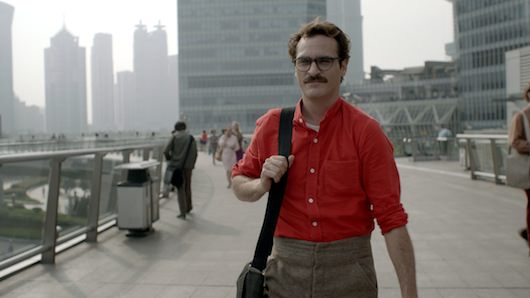
Was there a lot of description in the script about what Theodore’s apartment looked like, or was that incredible space created from the work you and your team did?
There was description, but not exacting. As you do with characters, you try to say, ‘Well okay, how much money does this person make, where does he live, what’s his economic strata?’ We decided to throw all of those normal arguments that you do with characters out the window, and we said that everybody has a nice place, and we didn’t worry about it. We knew we were going to spend a lot of time with him alone in his apartment, and we wanted to be able to look beyond the walls and see out into the city.
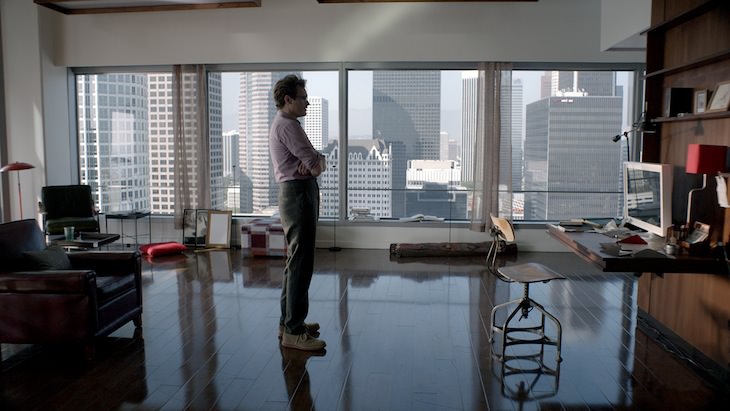
The Los Angeles you guys created rises very dramatically right outside his window.
It was hard to find the Los Angeles that, in the script, was much more built up and dense than the one that we know now. The myth that we’ve always been hoping for in Los Angeles is that this urban center downtown will become something practical, livable and enviable— we created that.
Did you create the apartment?
It’s a real apartment that had wonderful glass on two sides where you could really see a downtown, and that just helped opened his headspace. It was an open space, and we added walls, natural wood, and discrete lighting fixtures—when you get into the details of the apartment, there’s nothing that you couldn’t have right this second. In fact, there are a lot of retro things—a nice quilt on his bed that somebody handmade, furniture that somebody crafted a while back, a computer monitor that has a nice wooden frame that’s more like a picture frame that you’d put a photo or a painting in rather than a plastic or steel manufactured element. So everything was tactile and nice, and we just decided that everybody lives in large apartments like that.
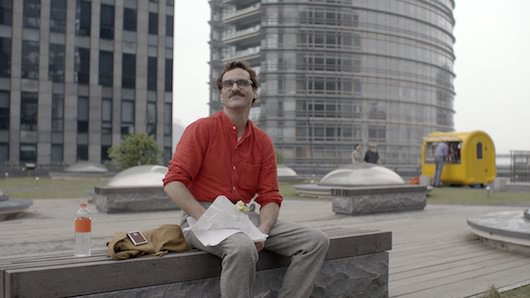
There was also a lot of green space in this future L.A…
Well, there should be. That’s one of the dilemmas of downtown [Los Angeles]—they’ve never really solved the urban landscape. They’ve got that new park, but it’s still quite dense with concrete rather than big leafy trees. It doesn’t feel like a New York park where people need to get out of their cubicles and into green space, so they’ve made sure that the green spaces are lush and alive. The denser a population gets, the more need for green space. Spike had an idea of putting parks on top of rooftops, and strangely, when we went to Shanghai, China also had a mandate to put green spaces on top of all their buildings.
Let’s talk about your career a bit. You’ve worked on really singular films [Being John Malkovich, Lost in Translation, I Heart Huckabees, Marie Antoinette, etc], a lot of those with Spike but also with Sofia Coppola, Michel Gondry, David O. Russell— has this variation from film to film been by design?
I’ve been very lucky, everybody I’ve worked with is a creative visionary, and they’ve originated these projects. It’s not like it was something on a studio shelf where they were saying, ‘Who should we assign to this, and what toys should we design around it?’ My directors have always been people who had their own vision and didn’t want make a cookie cutter movie; they wanted to make a movie true to their characters story. And Spike is probably the one that pushes this the farthest. I’ve been lucky to work on all his films.
Can you walk us through your process, from your first moments reading a script through the shoot?
The first thing you do is you get into the script. That’s really your only compass, your only reference point. You write down all of the scenarios and where they’re supposed to take place, because the responsibility is first to create a character out of backgrounds, which will support and elevate the characters within the story. You have the chance to tell a second story which isn’t in the dialogue, that sheds light on deeper characteristics of all of the characters. Like his apartment, which was a little bit unpacked because he had just come out of a divorce and hadn’t really settled in yet. Even though he’s got this big beautiful space, it’s not designed for entertaining other people because he’s really not ready for that. It’s just a lonely world.
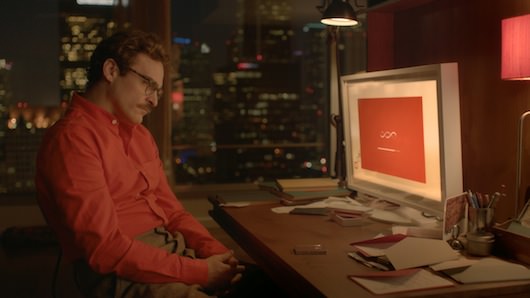
And you do this for every single scene.
You go through every scene and try to figure out what’s the best way to help move the story forward and add some wonderment for the audience without stealing the show from the internal workings of the character. You go through the entire script, you break down all of the places the characters are supposed to be, and then you sit with the director and you play twenty questions, a hundred questions, two-thousand questions. Slowly you start to develop a feeling of what you want to do with the world, and then you start pulling visual images. In this case, instead of pulling architectural images we pulled provocative photographs of different emotions, because it’s really a film about emotions. And then we tried to figure out how to translate those into spaces.
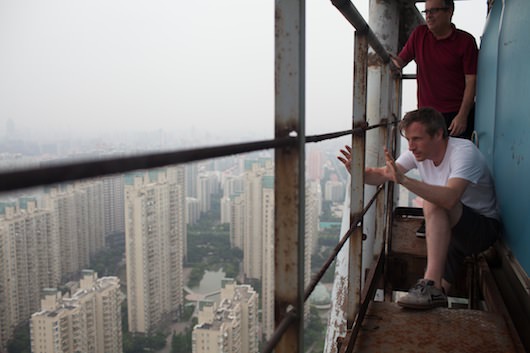
And then I imagine you’ve got to then translate all of this discovery work to your team.
Then you hire your crew. Because I’m back in Los Angeles, finally, I got to use my set decorator Gene Serdena, who’s a wonderful decorator. I also had my construction coordinator who’s going to build these things, Chris Forster, who I’ve worked with a number of times. Then you start sharing the ideas you had with the director with your team. And then the process repeats itself as they start asking you a hundred questions. And in the process of talking to your team, you start to question, ‘Oh, I guess we really shouldn’t do that,’ or, ‘I haven’t thought about that, what should the monitors look like? What should this device look like?’
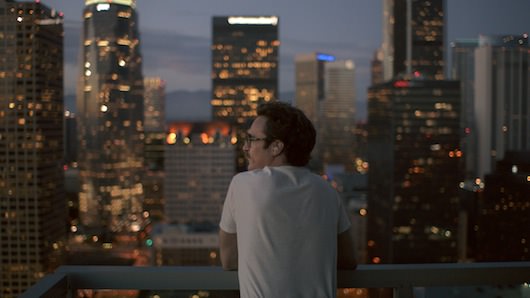
Tell me about how you created that incredible Los Angeles skyline?
We looked in a number of different cities and finally landed in Shanghai for some of the bigger exterior shots with the big buildings and the circular walkway that was elevated above the street. That eliminated the need for showing traffic, which I didn’t want to do because cars would have dated us into some time period, and we couldn’t afford to make a hundred cars. Little by little the world came together, by addition and subtraction, and through collaboration with the creative team. And then you make these decisions and you present them back to the director. It’s a constant evolution, a very organic evolution, especially with Spike, who’s very inclusive.
Who else are you sharing your ideas with on set?
I’ll show everything to Casey Storm, the costume designer, and I’ll show it to Eric [Zumbrunnen], the editor, and to Hoyte [Van Hoytema], the DP, and we’ll all have contributions, molding what this final product will be. It’s not like the production designer works in a bubble—he’s responsible for his own element, but he’s also responsible to collaborate and blend in with the other disciplines.
And these creative people have great ideas. Just because the title of their position seems to be a unique department in itself, they didn’t arrive at the head of these departments being unaware and unobservant. They’re highly observant, highly sensitive people, and they can have brilliant ideas for your department that you haven’t thought of because maybe your just too close close to it. So it’s a great thing being able to work with creative people all the time.
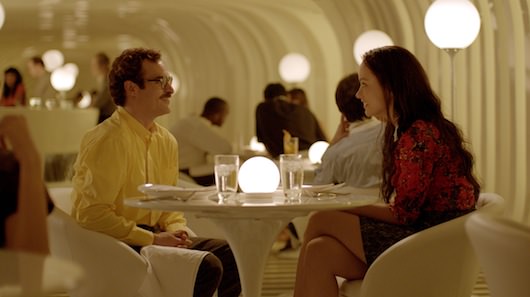
What other production designers out there do you admire?
I think the first production designer that I was aware of was Dean Tavoularis, who was Francis Ford Coppola’s production designer, and I quite admired him. He was the first one I could really see that was creating a unique world that a director relied upon. He had this wonderful eye and this magic that he brought to it. There are many excellent contemporaries, but I think the designer I relate to the best is Jack Fisk, who started out with David Lynch and now works with Terrence Malick and Paul Thomas Anderson. What caught my eye is he’s such a minimalist, he really only puts in what’s necessary, and he never tries to ladle on extra color, extra decoration—he just strips it down to an emotional core, and it looks very organic and very real.
Featured image: Joaquin Phoenix as Theodore in Spike Jonze's Her. Courtesy Warner Bros. Pictures.



